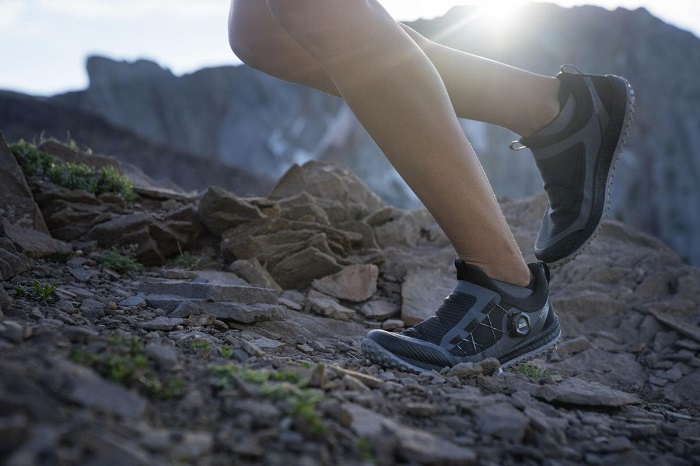Modern Aussies wear Western clothing and local styles can be sorted into two categories – surfwear and bushwear. Surfwear is characteristic for the beach or coastal areas, often consist of bathing suits, surfboard shorts and printed shirts, while bushwear is typical for outdoor activities such as hiking and hunting, where people tend to wear rugged clothes, felt hats and boots.
In Australia, the hot and arid climate has dictated a lot of fashion trends and the Australian bush clothing was designed as a result of the harsh conditions in the bush. Australian women in the bush were wearing pants back in the 1930s and both men and women were wearing cotton pants or moleskin jeans as well as oilskin coats because of their waterproof and breathable properties.

Source: boobookecotours.com.au
Best Clothing for the Aussie Wilderness
When spending time in the great outdoors, one of the most essential things you need is proper clothing. Your choice of clothing depends on the activity you’re undertaking, the environment and the forecast. Spending time outside in the bush requires clothing that’s tough, durable and comfortable.
Look for clothing that’s specifically designed for outdoor use, durable and wind and water-resistant, too. You can find Australian bush clothing designed and manufactured for spending time outdoors, that’s functional and comfortable at the same time. The following are some of the most important pieces of clothing you’ll need to ensure a safe and enjoyable adventure.
Base Layer
Remember that layering is important. It’s the air trapped between the different layers of clothing that keeps you warm. Make sure it’s loose because if your clothing is too tight the air pockets will be compressed and you’ll only feel colder.
Different layers of clothing serve different purposes and in hot weather you may have one layer only, to block the sun and allow enough air circulation, so you don’t sweat much. For the underlayer, during the summer months, a t-shirt may be all that’s needed, but during the winter months, the layer counts and a woollen thermal layer is required.
Mid Layer
This layer is for warmth, so you could use a long sleeve shirt or a warmer intermediate layer, a fleece pullover or a woollen jumper for cooler weather.
Outer Layer
This layer is to block wind and external water, so make sure you choose breathable, waterproof and windproof clothing, such as lightweight rain jackets, for instance.

Source: therunexperience.com
Shirts
When the weather’s very hot, a light cotton shirt takes the perspiration off our body, while a tough synthetic shirt can be a good choice for a scrubbier country area. In cooler weather, you’ll need something that sheds the wind and doesn’t hold water.
Trousers
While some prefer shorts, others prefer long trousers. Whatever your choice, make sure the material is tough as you may start with long, but return with shorts as they may get ripped and torn in a woodland or dene bushland environment. However, keep in mind that heavy longs are useful in rough and prickly scrub.
Long and quick-drying trousers are ideal for the bush. For colder, and especially wet weather, you may need something a little heavier. Some people opt for thermals and other wear trousers made of specialised stretch fabrics, a tough and warm option.
Underwear
Underwear has changed a lot over the years, but it remains to be very much a personal choice. Make sure you choose underpants that fit comfortably and are easy to wash and dry.

Source: forbes.com
Footwear
You’ll need sturdy robust outdoor footwear with ankle support and 2 or 3 pairs of waterproof socks.
Hat
A decent hat is essential to protect yourself from the hot Australian sun. In the winter, a woollen beanie is a great solution to keep you from losing radiated heat from your head.
Materials
When choosing your country clothing, consider the material it’s made from. Avoid wearing cotton near your skin when you’re in a cold environment as it stays wet and is hard to dry and you’re losing heat through conduction to the damp clothing.
Wools and synthetics are a good choice if you’ll be in a cold, wet environment. Wool retains approximately 70% of its insulative value when it’s wet, also it’s moderately fire retardant and smells less, which makes it a good choice for a base layer.
Synthetic or polyester materials are light and dry quickly, which is ideal for wet conditions. Moreover, your clothing can become wet through sweating, which is something you need to avoid when you’re in a cooler environment. Even when you’re in a warmer environment, the temperature can drop suddenly, like in the desert, for instance, and you need to be well prepared.
For warm and hot climates, it’s better to focus on keeping yourself cool most of the time. Loose-fitting cotton material can do the job as it can retain moisture to keep you cool during the day. But when the temperature drops at night, you need to make sure you are dry before that happens and always have a warm layer.
It’s important to keep your clothing clean and dry at all times because if it becomes dirty, it stops breathing and is not useful anymore. Knowing how to choose the right clothing for your outdoor adventures is one of the first steps to ensure a great experience, so you could prepare your kids as well and spend some quality family time.












